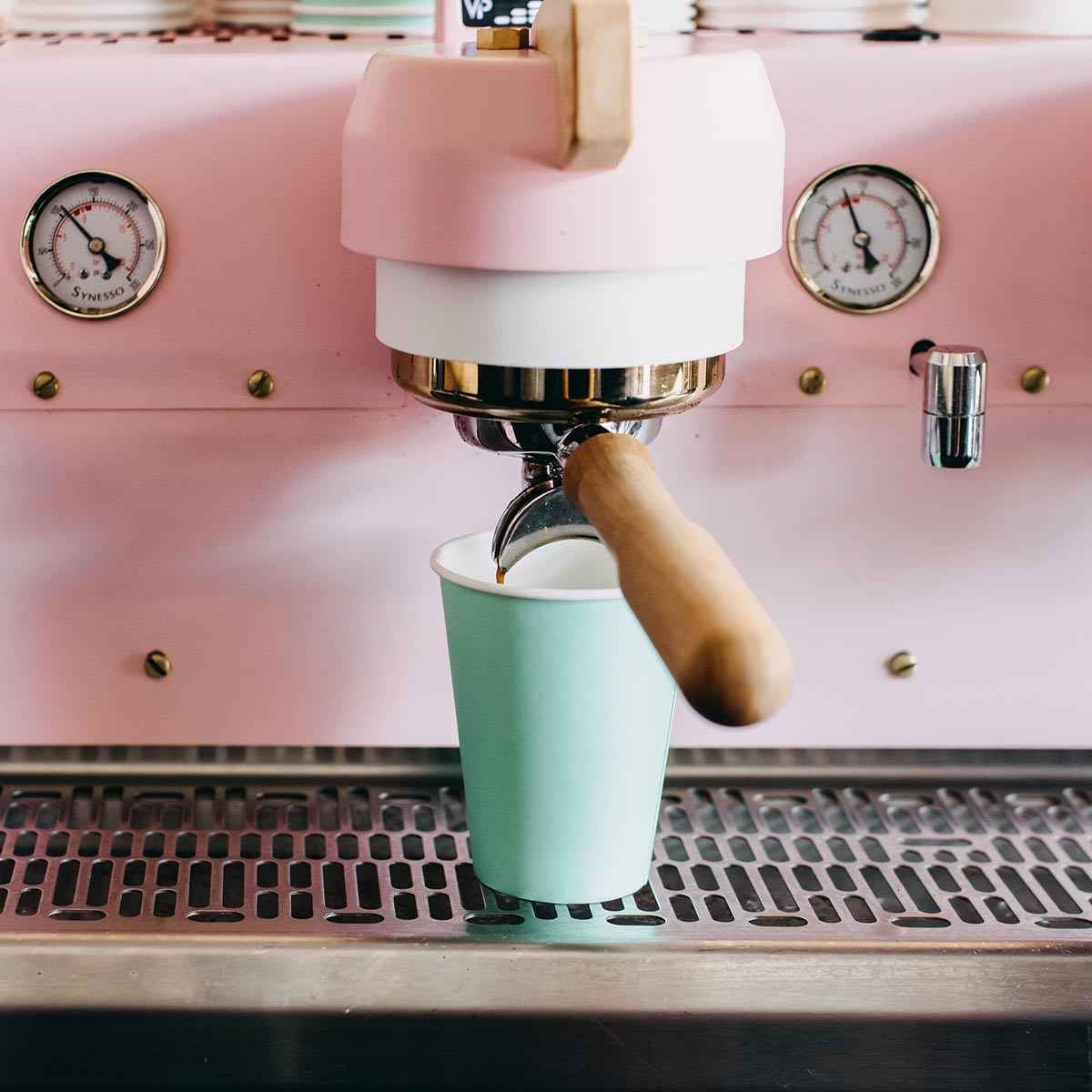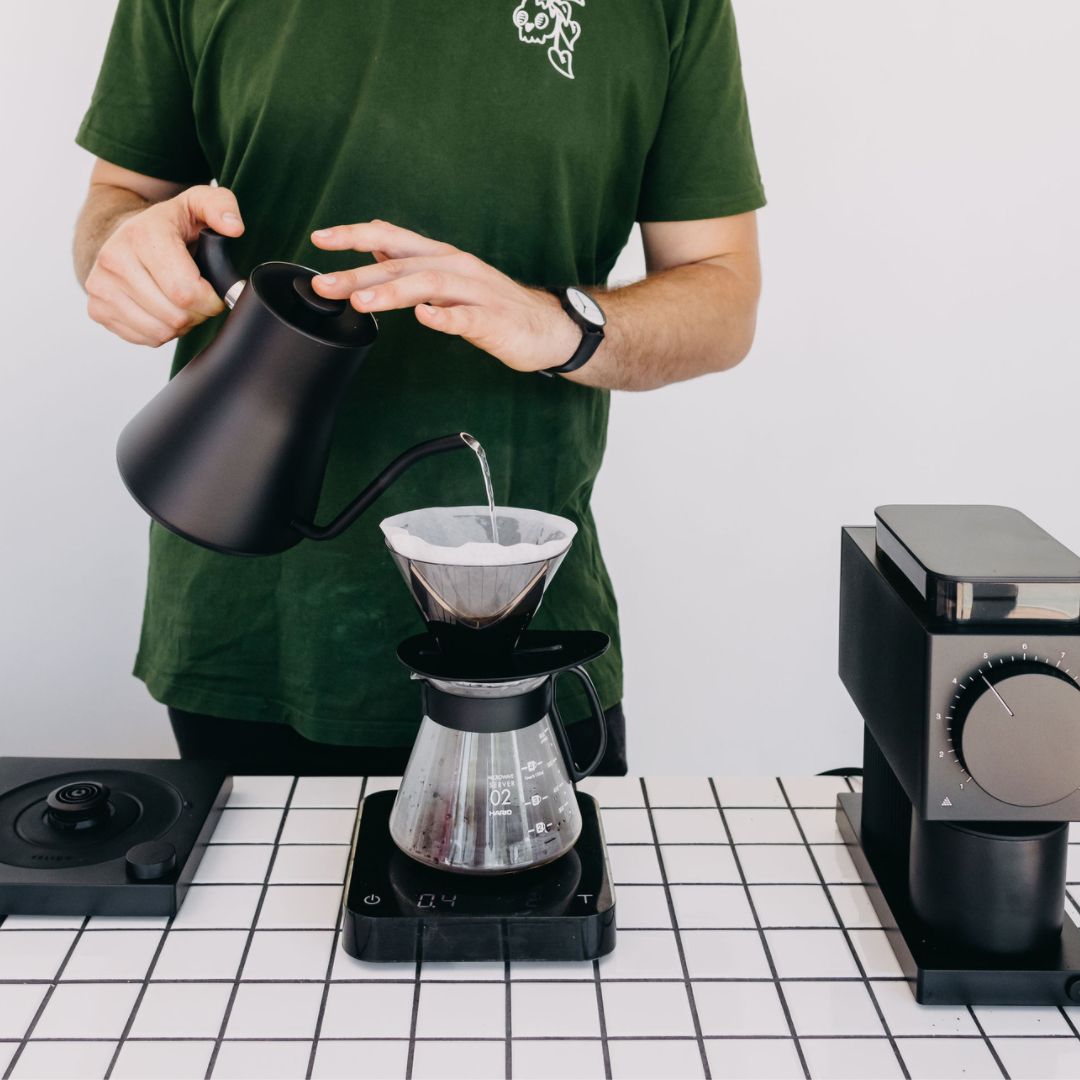
Deciding what is the best option for your cafe and what you need when opening a new space can be an impossible task if you’ve never worked in the industry before. We’re going to run you through how to choose the right coffee machine for you, what grinder’s are out there and any other accessories you may need.

If you’re opening a cafe without any experience in working in a coffee shop then buying an appropriate machine can be a daunting task. There are a lot of technical terms and small differences and it’s hard to cut through the noise and know what is necessary and what are needless bells and whistles.
The espresso machine is the heart and soul of any cafe, they are also the piece of equipment you’re likely to be sinking the most money into. Let’s run through the different components on a machine and figure out exactly what you’re looking for.
First thing to think about is the number of group heads you need on your machine. The number of group heads determines the amount of espresso you can make at one time, and the speed with which you can make them.
Generally if you are starting out I would recommend starting on a 2 group machine, these machines have the ability to do all but the largest cafes. If you are thinking you’ll be doing high volume straight from the get go I would actually recommend using the money you would spend on that extra group head to get a higher quality two group machine, such as a La Marzocco or Synesso.
Three group machines are great for really high volume cafes in which you need two barista’s working on one machine. The general configuration being one barista pulling espresso shots and the second steaming milk. These machines are great to upgrade to once you’ve had the cafe a while and know the demand is there to require a larger machine and higher staff costs.
There are custom machines that are made that have four or more group heads on them.Don’t be suckered into buying these machines as they are not actually very practical and you won’t see much difference in performance from a standard 3 group machine. Again you’ll be better off getting a higher performance 3 group machine than adding group heads. If you are in a situation where you need more than 3 groups you’d be better off looking into installing multiple machines.
What are some good features to look out for
Volumetrics: Volumetrics in a coffee machine means that your coffee machine will always dispense the same amount of espresso at the push of a button. The better quality the machine the more reliable these volumetrics are. If you are looking into a machine without volumetrics you want to make sure you have highly trained staff that know exactly what they’re doing.
Shot timers: A great feature to have on your coffee machine, shot timers display how long your coffee is extracting without needing to get out a stopwatch. It makes it very easy to pull consistently good coffee and lets you know if something isn’t running right.
Pressure gauges: Clear and readable pressure gauges are a very important tool and are often the first thing you check if something goes wrong.
Reliability: Reliability is one of the most important factors when buying a coffee machine. Coffee machines are the heart and soul of a cafe and if they shut down during service it will kill all of your business. When buying a machine, stick to brands with a reputation for quality builds. The tried and tested machines are always your best bet, as exciting as it is to be the first to get your hands on a new release, these machines often have a lot of teething problems.
Price and availability of spare parts: Check how easily you can get a hold of spare parts for your machine and how expensive replaceable parts are. Even some top of the line machines can be a nightmare to get parts for because they are not used often enough for technicians to stock them. Making sure you have easy access to replacement parts means that you won’t need to shut down your machine for several weeks while parts are flown in from Italy.

GRINDERS
How many do I need?
When buying grinders for your cafe you’ll need a grinder for each different type of coffee you want to have on hand at your cafe. A common set up is to have one grinder for your primary blend (for all milk coffees) and a second smaller grinder for a single origin coffee option (for the black coffee drinkers).
Do I need a decaf grinder?
Getting a whole grinder to do decaf coffee is largely unnecessary, I would recommend either getting your coffee pre-ground from your supplier or pre-grind it yourself prior to service. Essentially there aren't enough people ordering decaf to need to allocate a grinder for it.
What to look for in a grinder?
When looking for the right grinder to suit your cafe the big considerations are speed and prescission. Speed is how long it takes you to grind a dose of coffee (you don’t want it taking more than 7 seconds). Precision is how precise your grinder is with giving you your required dose every time.
What are the different types of Grinder?
Mostly what you’ll be after when getting a grinder for your cafe is a single dose automatic grinder. This type of grinder will dispense exactly the amount you need when you need it.
If you’re looking for a grinder that can grind a variety of different types of coffee as well as filter coffee or batch grinding for retail bags you can look into a Lab grinder. These grinders can grind large quantities of coffee at a time and can easily adjust coarseness between an espresso grind to a filter coffee grind. These grinder are used more for occasional grinding and cannot replace your single dose, on demand grinder.
COFFEE MAKING EXTRAS
Auto Tamper, distribution tool and Auto Steamers
These can be great extra additions for a cafe, these are additional extras and unnecessary if you are just looking to open a cafe with the bare minimum of equipment. The aim of these machines is to speed up service and increase consistency. The Auto tamp ensures a perfect tamp on your coffee every time meaning that the quality of the tamp does not change from barista to barista. Distribution tools are used to distribute the coffee grounds in the basket prior to tamping, these should be used in conjunction with an auto tamp but are also great tools for making tamping more consistent if you are hand tamping.
Auto milk steamers are aimed at high volume cafes that are at capacity with their current coffee machine and adding an auto milk steamer will allow them to make more coffee faster without adding an extra coffee machine and baristas.
VST Baskets
We always replace our coffee filter baskets with VST baskets, the VST filters offer high quality brewing and consistent extraction with reduced sediment. Particularly if you have an entry level machine, replacing the baskets with VST filters will give you noticeable better results.
There is so much out there and it is important to get the lay of the land before committing to a bunch of expensive equipment. Signing onto a contract with a roaster can be a good idea because then they will be invested in your business and ensuring you succeed. A good roaster will have a wealth of experience and knowledge to draw on and can advise you on your best option for your particular circumstance.

